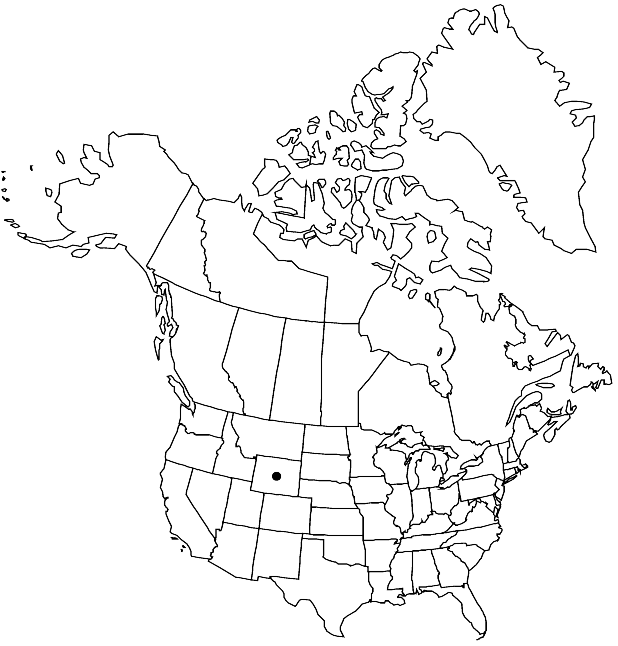Physaria macrocarpa
Novon 12: 325. 2002.
Perennials; caudex branched; densely pubescent, trichomes (sessile or short-stalked), 4–6-rayed, rays distinct, usually furcate, rarely bifurcate, (finely tuberculate throughout). Stems few or several from base, prostrate to decumbent, (unbranched or branched), 0.5–1.5 dm. Basal leaves: blades orbicular to broadly obovate, 1.5–3 cm, margins usually entire, rarely remotely dentate. Cauline leaves (sessile or shortly petiolate); blade elliptic to oblanceolate, 1–1.5(–2.5) cm, margins entire, (apex obtuse). Racemes dense, (elongated in fruit). Fruiting pedicels (sharply recurved), 5–10 mm, (stout). Flowers: sepals ovate or oblong-elliptic, 5–5.5 mm, (lateral pair not saccate); petals cuneate or broadly obovate, ca. 7 mm, (sometimes slightly narrowed to a broad claw, apex sometimes retuse). Fruits subglobose to broadly obovoid, strongly inflated (often slightly angustiseptate), 5–7 mm, (papery); valves sparsely pubescent; (septum fenestrate, perforate, or obsolete); ovules 4–8 per ovary; style 2–3 mm. Seeds somewhat flattened.
Phenology: Flowering May–Jun.
Habitat: Gypsum-clay hills and benches, naked clay flats and barren hills
Elevation: 2000-2400 m
Discussion
Of conservation concern.
Physaria macrocarpa is found in the Great Divide and Green River basins.
Selected References
None.
